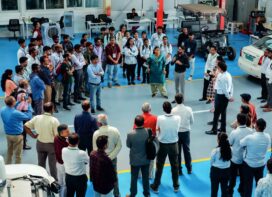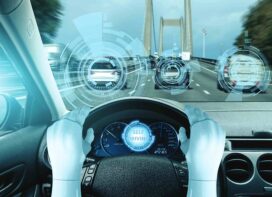 “Developing cities need to incorporate transport planning as part of their development process. And, from the outset, they need to implement traffic systems in a way that they allow continued expansion, both in terms of spatial coverage and facilities offered. However, any new facilities will need to ensure that their operation is accurate, timely and reliable”.
“Developing cities need to incorporate transport planning as part of their development process. And, from the outset, they need to implement traffic systems in a way that they allow continued expansion, both in terms of spatial coverage and facilities offered. However, any new facilities will need to ensure that their operation is accurate, timely and reliable”.
– Alistair Gollop
The need for bringing in consultants for the transport component has a lot to do with the traffic conditions in our country, says Ashish Tandon, MD, Egis India Consulting Enfineers Pvt Ltd. “The most evident problem in most Indian cities is the design and maintenance of the roads. Inadequacy of public transport, congestion of streets, and streets that are constantly dug up or are in a state of repair are major hurdles faced by the citizens as they maneuver through their daily commute. Our public spaces are neither child-friendly nor cater to the needs of the senior citizens. The Smart City Mission pioneers the intent of integrated urban transport systems and management – no other initiative of the Government in the past has given so much importance to creation of NMT, and enhancement of pedestrian movement in addition to designing ‘urban’ roads based on urban traffic needs – clearly distinct from highways and rural roads”.
He is of the opinion that the Urban Transport Consultant today is, hence, the key to the success of the Smart City Mission. “Mobility has been selected as the pan city proposal by most cities based on citizen polls. It is now up to the consultants to implement the vision of the cities and fulfill their quest for efficient and safe mobility solutions”.
Dr Jaijit Bhattacharya, Partner, Strategy & Economics, KPMG India feels a consultant has to identify key issues within the ‘traffic and transport’ component of a smart city from citizen interactions and “thereafter, fashion integrated strategies which promote key livability outcomes in cities through various measures”. The measures, according to him, are: “Improvement of quality of local public transport services and public infrastructure for enhanced user experience and efficiency; promotion of non-motorized transport and pedestrian-friendly networks; improvement of communication, integration, and efficiency of transport systems; improvement of road safety and surveillance, including automated speed enforcement; real-time parking management systems; promotion of electric vehicles to reduce air pollution; and integrated smart cards”.
 “Incentivizing and integrating the payment system would be the best way to make it economically viable for a common man. Ideas such as discounts on transport tickets on using parking spaces, and a unified payment card for all transport system to evolve easy payment options which enables one ticket system for transit across all transport modes must be adopted.”
“Incentivizing and integrating the payment system would be the best way to make it economically viable for a common man. Ideas such as discounts on transport tickets on using parking spaces, and a unified payment card for all transport system to evolve easy payment options which enables one ticket system for transit across all transport modes must be adopted.”
– A Shankar
 TrafficInfraTech Magazine Linking People Places & Progress
TrafficInfraTech Magazine Linking People Places & Progress


